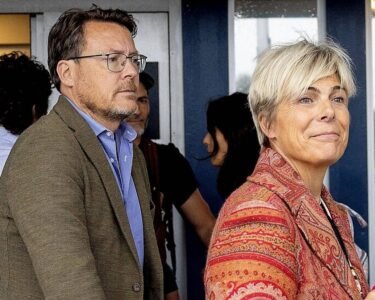WHEN I was an assistant curate, conducting my very first wedding, nerves got the better of me. Caught between the prospect of kneeling or sitting, I introduced a time of prayer with the memorable words “Let us knit.”
Two things strike me about that moment, some 25 years on. First, the congregation — largely, if not completely, unchurched — did not bat an eyelid. Presumably, they assumed that knitting was just another of those dull things that you inevitably end up doing during dull Christian acts of worship.
Second, my kindly incumbent — watching on from afar like a fielder in the deep — remarked afterwards that the slip-up could have been so much worse; in any event, he continued, thank goodness there was no video evidence. “We’d not want to end up as a funny filler in Beadle’s About.”
Last week’s furore over “controlling” vicars and “restless” wedding photographers brings it all back (News, 8 March). But, a quarter of a century on, with the rise and rise of Instagram and other social-media sites, society is far more inured to the ubiquity of visual content. Where, indeed, would Canon Kate Bottley be in 2024 had her break-out dance routine to C+C Music Factory’s “Gonna Make You Sweat (Everybody Dance Now)” and Kool and the Gang’s “Celebration” not been recorded at a Nottinghamshire nuptials in 2013 and become a viral sensation on YouTube?
OF COURSE, there is a balance to be struck. At a recent interview, I was asked what makes a good wedding; on reflection, my answer focused too much on what the officiant does. I could have said rather more about the reception venue, flowers, and — yes — the photographic record of the day. It is always nice to be at the centre of things, but maybe that centrality is shared more than officiants are prepared to admit.
That said, the good news of God’s enduring love for the bride and groom — and each and every one of us — should never be eclipsed; all eyes will rightly be on this.
And so, at weddings, I often find myself recalling words attributed to the late Labour politician Tony Benn: “Most things in life are moments of pleasure and a lifetime of embarrassment; photography is a moment of embarrassment and a lifetime of pleasure.”
I invite the happy couple to enjoy their moments in the limelight, but with a cheerful challenge, too: “Like a good photo, may your lives together spread much happiness — speaking to the world of God and of his love in Christ Jesus, of the value, worth, and depth of each and every one of us.”
Long before I was ordained, I went to a wedding in rural Madagascar, which, I’m now fairly sure, took place when it did only because I had a camera. The groom had been putting off the big day until he knew that it could be caught on film. When a man with an Olympus wandered into his village, the banns were quickly called. In church, Bernardin gave me a front-row seat and instructions to shoot freely — not that this stopped him from stepping out of his own wedding ceremony several times to line up a better camera angle for me. At one point, he even interrupted the bride’s vows.
Henri Cartier-Bresson, a Frenchman credited as the creator of documentary photography, would have understood Bernardin. Cartier-Bresson, who died 20 years ago, always looked for what he termed “the decisive moment”, and found it memorably as he portrayed Gandhi just before his assassination, Paris being liberated, and children playing on the Berlin Wall.
HOW many marrying couples, I wonder, consider holy matrimony a “decisive moment”? All being well, it is a time when the bride and groom find themselves unusually close to God.
As Canon Giles Fraser once observed in these pages, “births, baptisms, and deaths have this in common with marriages — they are all occasions when the well-fortified walls of self-preservation begin to come tumbling down.” Whenever we do that most irrational of things and allow our defences to drop, then it is not only the wedding photographer who gets to benefit: God, at last, also gets a look and a word in.
Cartier-Bresson had another phrase. He defined the taking of a photograph as “putting one’s head, one’s eye, and one’s heart on the same axis”. I like the straightforward integrity in that formulation, an integrity that the Royal Family might need to heed after the Princess of Wales’s hapless Mothering Sunday photograph. In a world that is not only social media-savvy but increasingly at risk of AI fakery, the issues raised by her supposed techniques are issues for us all. At what point does honest editing become manipulation? When does touching up tip the scales of inauthenticity?
Perhaps you will forgive the observation that getting head, eye, and heart on the same axis is not important only for taking good pictures. No work of art is more important than our own lives, which are given to us to express love. Each of us is, in this sense, a work in progress . . . like a photo developing in the dark, at length taking shape . . . until head, eye, and heart are at one with God’s great love for us.
The Revd Philip Harbridge is the Priest Vicar of Wells Cathedral.




